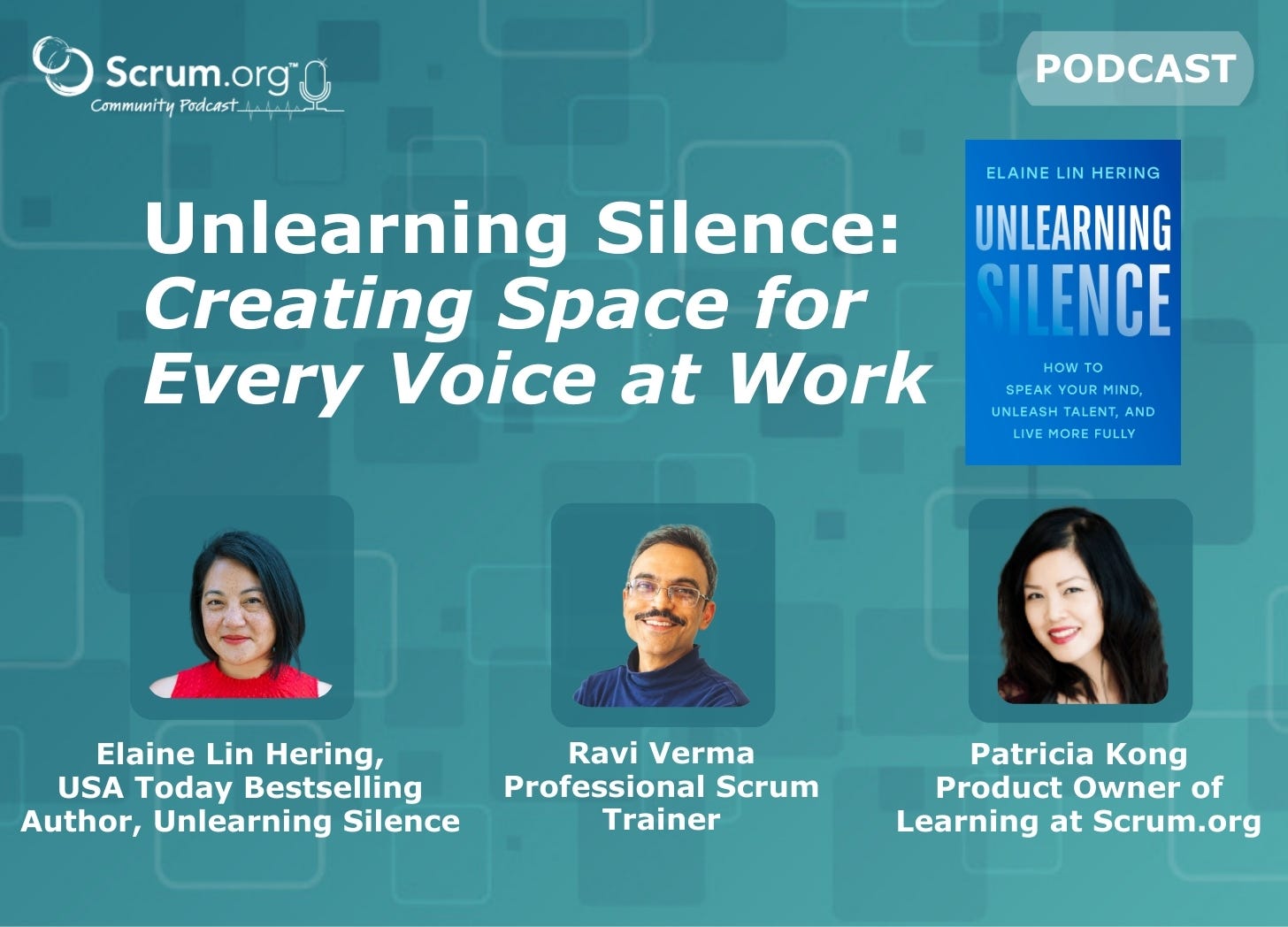Unlearning Silence: Creating Space for Every Voice at Work
Creating Space for Every Voice at Work
In this recent episode of the Scrum.org Community Podcast, Patricia Kong hosts a discussion with Elaine Lin Hering, author of “Unlearning Silence,” and Ravi Verma, a Professional Scrum Trainer. They examine how workplace culture and cultural norms influence who speaks up and why intentional communication matters.
Elaine explains that silence can be strategic or damaging, depending on context, and emphasizes the need for leaders to create environments where all voices are heard. Ravi shares his experiences with reactive versus reflective decision-making and the importance of transparency. They discuss practical strategies for encouraging voice and the significance of designing inclusive meeting practices.
While this conversation is much bigger than the topic of meetings, as I produced this episode I kept thinking about what silence means in meetings in particular. We’ve all been in those meetings. Is it disinterest, meeting overload, or do people feel as if they do not have a voice or a say in the matter at hand? This led me to think about facilitation practices that encourage participation and I think trust within the team is essential. Whether the facilitator is a Scrum Master, Developer, or another team member, trust is the key to engagement.
Before even going this far, it is important to identify the role silence is playing, which can be incredibly difficult. Elaine points out in the discussion that sometimes silence is appropriate because some people post-process when it comes to making decisions or sharing ideas. I am often a post-processor myself and this spoke to me. If a lot of information is shared with me and the action is to formulate a choice, I often prefer to ruminate for a short time before making my decision or voicing ideas.
Conversely, Elaine points out in the book that external processors often prefer to talk through their thoughts right away and can end up dominating the conversation unintentionally. Elaine suggests that organizations can create space for post-processing and allow the team to post-process for a set period of time and then allow space to share their voice. An example could be sending out questions before a meeting so that people can choose to process after thinking about it. Elaine also suggests that the external processor can use phrases like “I’m just thinking aloud” and let the team know “Here’s where I am landing,” when they are wrapping up their thoughts. Everyone is wired differently, and that is a good thing as it adds to diverse thinking!
Psychological safety is another factor to consider here. If it’s absent, the repercussions go far beyond silence in meetings. Valuable ideas, innovative solutions, and critical feedback may never surface, depriving the team of opportunities to improve. When only a few voices are consistently heard, teams risk slipping into complacency, blind spots, and groupthink. Over time, this not only stifles creativity and learning but also causes the loss of trust, engagement, and morale.
By fostering psychological safety through the Scrum Values—commitment, courage, focus, openness, and respect—teams can shift from holding back to speaking up. That shift unlocks diverse perspectives, sparks innovation, and strengthens collaboration. It’s in this environment that continuous improvement thrives.
This episode highlights the importance of diverse thinking, inclusion, transparency, and understanding that people think, react, and work differently. Silence can mean many things, but ensuring everyone has space to be heard if they want to be is essential. Listening to this episode is eye-opening for anyone who wants to foster truly inclusive and effective work cultures.


